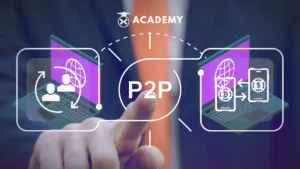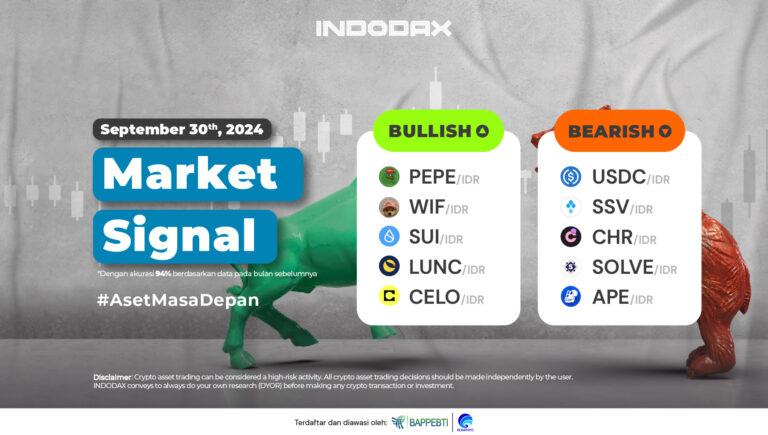Peer to peer (P2P) is a term often heard by those in the field of technology and information. P2P is a type of network where each connected device in an environment can share resources.
The main purpose of P2P is to facilitate the sharing process in an environment. If the network only consists of two computers, the use of a LAN or UTP cable connected to each computer network card is sufficient.
Well, to better understand what peer-to-peer (P2) is, starting from its history and development, how it works, examples of services, to its advantages and disadvantages, see the following review.

What is Peer-to-Peer (P2P)?
While the term peer to peer is often heard, some may still wonder what exactly peer to peer is and what its characteristics are. Basically, peer to peer is a type of network that consists of several computer devices.
It connects these devices, where servers and clients are on equal footing. That way, the connected computers have no central control.
Data sharing in a peer to peer network is easy and fast because there are no special access rights or centralized control. Each computer is fully responsible for the security of its own device.
Imagine that there are three computers connected, namely computers X, Y, and Z. For example, computer X retrieves a file from computer Y. In that situation, computer X acts as a server, while computer Y functions as a client.
Another time, computers X and Z share files with computer Y. In this scenario, computer Y acts as a server, while computers X and Z act as clients.
In a peer to peer network, each user has equal capabilities, and no single user can initiate a communication or interaction session independently.
Usually, peer-to-peer networks are utilized in small-scale networks that do not require a dedicated server. This is because the more devices that are connected, the more it affects the performance of each device.
However, for large-scale networks, more complex administration is required. Therefore, one or more server computers are usually required to manage the connected client computers.
History and Development
The modern concept of peer-to-peer (P2P) was popularized by file sharing systems, such as the music sharing application Napster, which emerged in 1999.
The P2P movement allows millions of internet users to connect directly, form groups, and collaborate with each other to function as user-generated search engines, virtual supercomputers, and file systems.
This model of network setup differs from the client-server model, where communication usually occurs from and to a central server. Today, P2P services have evolved beyond mere internet services although most are considered internet-based.
Peer-to-peer services cover a wide range of activities from simple buying and selling to those considered part of the sharing economy.
Some P2P services do not even involve paid transactions by users at all, but connect individuals to work on common projects, share information, or communicate without a direct intermediary.
Such P2P services may be operated as free non-profit services or generate revenue through advertisements to users or by selling user data.
When a third party is removed from the transaction, there is a greater risk that the service provider may fail to deliver and the service will not be of the expected quality.
Another risk is that the buyer may not pay. For example, one or both parties may be able to take advantage of asymmetric information.
This additional risk is an additional transaction cost for P2P transactions. Often, P2P services are created with the aim of facilitating these transactions and reducing risks for both buyers and sellers.
The cost of the service may be borne by the buyer, seller, or both, or the service may be offered for free and generate revenue in other ways.
How does it work?
In terms of how it works, on a P2P platform, interactions occur directly between users without a central intermediary.
In this case, users, both as buyers and sellers, can communicate, exchange information, and complete transactions directly through the platform.
The mechanism allows users to set their own transaction terms, such as price and delivery method, which are mutually agreed upon by both parties.
On the other hand, technology plays an important role in connecting buyers and sellers on P2P platforms. Through matching algorithms, the platform can automatically suggest suitable transaction pairs based on users’ preferences or needs.
Encryption and security technologies are also used to protect data and communication between users so that transactions can take place safely.
Examples of the Most Common P2P Services
Below are some of the most common examples of P2P services that are important to know, including:
1. Open Source Software
Anyone can view or modify the code of this software. Open source software seeks to eliminate the central publisher of software by relying on crowdsourcing for coding, editing, and quality control of software among authors and users.
2. File Sharing
File sharing is a place where uploaders and downloaders meet to exchange media files and software. In addition to peer-to-peer networking, file sharing services can also offer scanning and protection of shared files.
They can also offer the ability for users to anonymously bypass intellectual property rights or can otherwise provide enforcement for intellectual property rights.
3. Online Marketplace
An online marketplace consists of a network that allows private sellers to find interested buyers.
Online marketplaces can offer promotion services for sellers, buyer and seller ratings based on history, payment processing, and escrow services.
4. Crypto Assets and Blockchain
Blockchain is an aspect of cryptocurrency technology. It is a network where users can make, process, and verify payments without a central currency issuer or clearinghouse.
Blockchain technology allows people to conduct business transactions using crypto assets and create and enforce smart contracts.
5. Home and Ride Sharing
Home sharing allows property owners to rent out all or part of their property to short-term tenants.
Typically, these home sharing services provide payment processing, quality assurance, or assessment and qualification of owners and tenants.
Meanwhile, ride-sharing is a platform for car owners to offer chauffeur services for people looking for taxi rides. Ride-sharing platforms offer services similar to home-sharing services.
Advantages and Drawbacks
Peer to peer networks have a number of advantages that every user can enjoy. However, there are also some disadvantages that need to be known. Here is a full discussion of the advantages and disadvantages of P2P.
1. Advantages
Based on the explanation and characteristics of P2P networks, the main advantage of this network lies in its effectiveness and ease of installation. Each device can be connected to each other, even with just one UTP cable.
Another advantage of a peer to peer network lies in its flexibility. This can be seen from the ability of each computer to function as both a server and a client, which can take turns during the resource sharing process.
No special applications or systems are required to build this network, which is certainly an advantage and convenience worth considering by users of this network.
Another advantage of peer to peer networks is that they are affordable and do not require a dedicated administrator to manage the network.
In addition, if one computer experiences problems or constraints, it will not affect the network on other computers.
2. Weaknesses
One of the main disadvantages of P2P services is the lack of a third party to assess the parties involved. This creates a level of risk and information asymmetry.
On file-sharing sites, the media available for download may be corrupted. On home-sharing platforms, there can be a mismatch between the expectations of property owners and tenants, which can lead to disputes that are difficult to mediate in the absence of a third party.
Meanwhile, on P2P payment platforms, it is difficult to recover erroneous payments as there is no mediator involved in overseeing the transaction.
Popularity and Trends of P2P Services
P2P services have become very popular in the last decade. This is partly due to the convenience they offer.
For example, people can transfer money to each other in seconds via online platforms, order rides via online motorcycle taxis within minutes, and book apartments via apps all over the world with great ease.
On the other hand, peer to peer or P2P services can also carry risks for one or both parties due to information asymmetry.

The Future of Peer-to-Peer Services
Peer-to-peer (P2P) services have great potential for further development in various sectors, including finance, transportation, property and entertainment.
With technological advances, such as blockchain and artificial intelligence (AI) P2P services can become more secure, efficient and far-reaching.
For example, the use of smart contracts can increase transparency and trust in P2P transactions, while more sophisticated algorithms can improve matching between users on P2P platforms.
Despite its great potential, P2P services also face significant challenges. Risks related to security, data protection and information asymmetry remain major concerns.
Additionally, immature regulations in many regions may hinder widespread adoption of such services.
However, these challenges also provide opportunities for innovation, such as the development of stronger security technologies, improved user protection mechanisms, and improvements to identity verification systems.
Conclusion: Are P2P Services Worth Using?
In conclusion, peer-to-peer (P2P) services offer various advantages, including ease of use, relatively low costs, and high flexibility.
This service allows users to conduct direct transactions, share resources, and collaborate without the need for a central intermediary.
Thus, various processes, for example money transfers, ride bookings, and file sharing, become more efficient and easily accessible with P2P services.
However, this service also has risks that need to be considered, including a lack of third party verification, potential security problems, and information asymmetry that can give rise to uncertainty or disputes.
Data security risks and possible fraud are challenges that may be faced when using this service.
Furthermore, for those considering the use of P2P services, it is important to understand and address these risks.
Steps that can help optimally utilize the benefits of P2P services while minimizing the associated risks include choosing a platform with good security features and a trusted reputation.
In addition, it is also important to verify the information and identity of other users and understand the terms and policies of the service.
So, that was an interesting discussion about what peer to peer (P2p) is, starting from the definition, how it works, examples and advantages and disadvantages. Oh yes, you can also read various other interesting articles about the world of crypto and blockchain technology at the Crypto Academy at INDODAX Academy .
FAQ
1. What is Peer-to-Peer (P2P) service?
Peer-to-Peer (P2P) services are platforms that allow two parties to transact directly without intermediaries, such as buyers and sellers connecting directly to carry out transactions.
2. What are some examples of common P2P services?
Examples of P2P services include open source software, file sharing, online marketplaces, cryptocurrencies and blockchain, and home and ride-sharing services.
3. What are the advantages of using P2P services?
The advantages of using P2P services include ease of transactions, cost savings, and elimination of middlemen, which can make transactions faster and cheaper.
4. What are the main risks of P2P services?
The main risks of P2P services are information asymmetry and lack of third-party inspection, which can lead to problems such as damaged media or disputes between users.
5. Why are P2P services becoming popular?
P2P services have become popular due to their convenience and efficiency, allowing users to perform various activities, such as payments and rentals, quickly and easily without the need for a third party.





 Polkadot 8.91%
Polkadot 8.91%
 BNB 0.45%
BNB 0.45%
 Solana 4.80%
Solana 4.80%
 Ethereum 2.37%
Ethereum 2.37%
 Cardano 1.65%
Cardano 1.65%
 Polygon Ecosystem Token 2.13%
Polygon Ecosystem Token 2.13%
 Tron 2.85%
Tron 2.85%
 Market
Market


